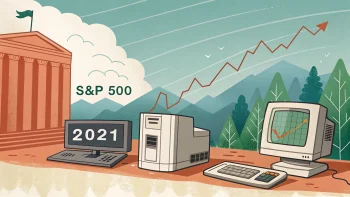The recent Personal Consumption Expenditures (PCE) inflation report has unveiled some unexpected insights into the financial behavior of the average American. Contrary to expectations, the shock was not in the inflation rate but in the significant increase in personal income and the corresponding decrease in spending. These trends have substantial implications for investors, particularly those who continue to hold onto cash and other low-yield assets.
Table of Contents
ToggleSurprising insights from the PCE inflation report
The PCE inflation report for January showed that inflation came in exactly as expected at 2.8%. This figure aligns with the Federal Reserve’s target and suggests a stable economic environment. However, the real surprise was in the data on personal income, which showed a significant jump of 1% in January, far exceeding expectations.
View this post on Instagram
A post shared by Taylor Sohns – CFP®, CIMA®, MBA – Finance (@lifegoalinvestments)
Implications of increased income and decreased spending
If this trend continues, it could mean that the average American might experience a 12% increase in income this year, even after adjusting for inflation. This is a significant increase and could profoundly impact the economy as a whole. Higher incomes generally lead to increased consumer spending, which drives economic growth. However, the report also revealed a surprising decrease in spending in January, indicating that Americans are choosing to save or invest their increased income rather than spend it.
This trend of increased income and decreased spending is a dream scenario for personal finance enthusiasts. It suggests that Americans are becoming more financially savvy and are prioritizing saving and investing over immediate consumption. This is a positive trend for the economy as a whole, as it suggests a more sustainable approach to personal finance.
Market response to the trends
The financial markets have responded positively to these trends. Both stocks and bonds have performed well after the report, indicating that investors are confident in the economic outlook. However, not all assets have benefited from these trends.
Cash, Certificates of Deposit (CDs), money markets, and short-term treasuries have lagged behind other assets. These low-yield assets are being left behind as other assets appreciate in value. This trend has been ongoing for the past 18 months and shows no signs of abating.
The dangers of sitting on cash
The underperformance of these assets clearly indicates the dangers of sitting on cash and trying to time the markets. Market timing is a notoriously difficult strategy to execute successfully, and the vast majority of investors who attempt it end up underperforming the market. The fact that there are no members in the market timing hall of fame is a testament to the difficulty of this strategy.
Instead of trying to time the markets, investors should focus on building a diversified portfolio of assets that can weather market volatility and deliver consistent returns over the long term. This approach is far more likely to deliver positive results than attempting to time the market.
Conclusion
In conclusion, the recent PCE inflation report has revealed some surprising trends in the financial behavior of the average American. The significant increase in personal income and decrease in spending suggests a more financially savvy population prioritizing saving and investing over immediate consumption. However, those who continue to hold onto cash and other low-yield assets are missing out on the benefits of these trends. Instead of trying to time the markets, investors should focus on building a diversified portfolio that can deliver consistent returns over the long term.
Frequently Asked Questions
Q. What were the surprising insights from the recent PCE inflation report?
The recent PCE inflation report revealed a significant increase in personal income and a corresponding decrease in spending, contrary to expectations. This suggests Americans are choosing to save or invest their increased income rather than spend it.
Q. What are the implications of increased income and decreased spending?
If this trend continues, it could mean a 12% increase in income for the average American this year, even after adjusting for inflation. This could have a profound impact on the economy as a whole. However, the decrease in spending indicates that Americans are becoming more financially savvy and are prioritizing saving and investing over immediate consumption.
Q. How have the financial markets responded to these trends?
The financial markets have responded positively to these trends, with both stocks and bonds performing well. However, low-yield assets like cash, Certificates of Deposit (CDs), money markets, and short-term treasuries have continued to lag behind.
Q. What are the dangers of sitting on cash?
The underperformance of low-yield assets clearly indicates the dangers of sitting on cash and trying to time the markets. Market timing is a notoriously tricky strategy to execute successfully, and most investors who attempt it end up underperforming the market.
Q. What should investors focus on instead of trying to time the markets?
Instead of trying to time the markets, investors should focus on building a diversified portfolio of assets that can weather market volatility and deliver consistent returns over the long term.

















